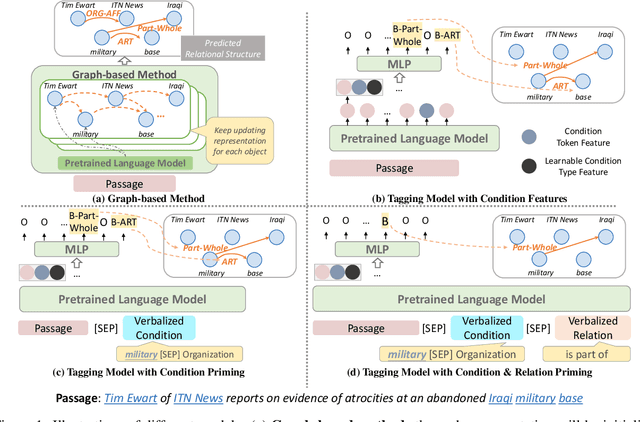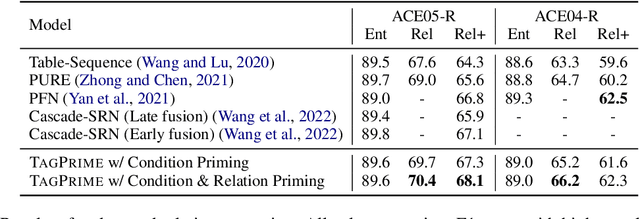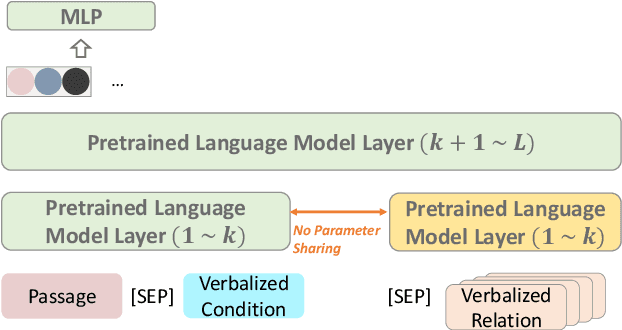Wenxin Cheng
A Simple and Unified Tagging Model with Priming for Relational Structure Predictions
May 25, 2022



Abstract:Relational structure extraction covers a wide range of tasks and plays an important role in natural language processing. Recently, many approaches tend to design sophisticated graphical models to capture the complex relations between objects that are described in a sentence. In this work, we demonstrate that simple tagging models can surprisingly achieve competitive performances with a small trick -- priming. Tagging models with priming append information about the operated objects to the input sequence of pretrained language model. Making use of the contextualized nature of pretrained language model, the priming approach help the contextualized representation of the sentence better embed the information about the operated objects, hence, becomes more suitable for addressing relational structure extraction. We conduct extensive experiments on three different tasks that span ten datasets across five different languages, and show that our model is a general and effective model, despite its simplicity. We further carry out comprehensive analysis to understand our model and propose an efficient approximation to our method, which can perform almost the same performance but with faster inference speed.
 Add to Chrome
Add to Chrome Add to Firefox
Add to Firefox Add to Edge
Add to Edge